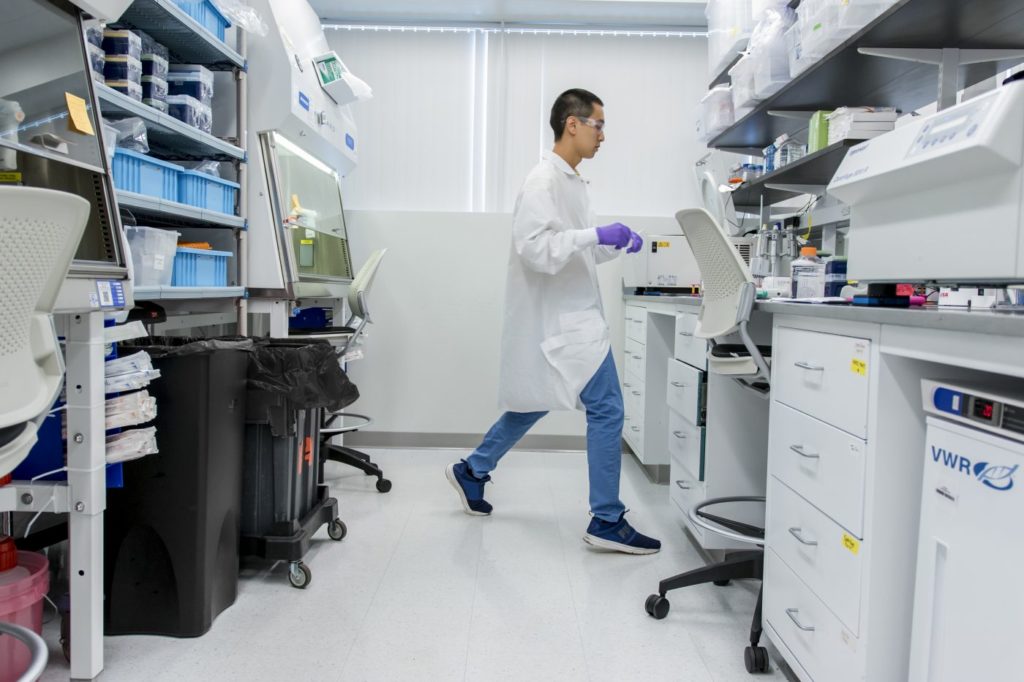By Sal Daher, CFA
Early-stage biotech investing has been the preserve of deep-pocketed investors where angels have feared to tread. The reasons include that it takes a long time to train life scientists, that biology is hard, that life sciences need specialized laboratories with expensive equipment, and that biotechnologies have long and costly product cycles. But the cost of starting life science companies has begun to come down and the trend is likely to accelerate. We expect an explosion in the number of biotech companies that can benefit from the type of help angel investors are good at providing. However, angels need to adapt to the special requirements of life science investing. Labcoat Ventures is committed to helping angels make that transition so they can reap the rewards of the coming Decade of Biotech.
Angel Investing Needs to Evolve Beyond Its Software Roots: Angel investing grew up around software companies and it remains software-centric. It came of age in the decade since 2011 when Marc Andreessen penned his now-famous WSJ editorial titled “Why Software Is Eating the World.” During this time the cost of starting a software company came down dramatically and created countless opportunities for angels from the world of software to apply what they had learned founding their own companies. Think about the impact of open-source software, APIs, web hosting services, shared workspaces, CRMs, inbound marketing, deferred legal fees, fractional CFOs; not to mention the Lean Startup movement. These powerful trends have helped transform our lives and created massive wealth.
Shared lab spaces, fractional use of high-end scientific equipment (portfolio company Meenta.io), better contract manufacturing, 3D printing and the underlying technologies themselves are all lowering the barriers for starting early-stage life science companies.
Professors in the life sciences have begun to see colleagues who cash in on the sale of their startups and are increasingly interested in starting their own companies. They get support from programs such as the NSF’s I-Corps as well as university-led initiatives to encourage the translation of discoveries from the laboratory to industry. Purdue University now evaluates professors in its School of Engineering on criteria that include the value of patents granted and startups founded. Expect to see a lot more early-stage life science companies; many of which can get off the ground with angel funding and help.
These differences mean that angels need to adapt to the requirements of early-stage companies in many respects. Here’s a partial list.
Bigger & More Sustained Raises: You can learn a lot about the prospects of a software startup with $500,000 to $750,000 in funding. The really successful software startups get funded by venture capital early on so angels may not need to make follow-on investments. Life science companies need more money to get to the point where it’s clear there’s value to the technology. Initial rounds of $1 million to $1.5 million are not uncommon. However, these are just the start. If all goes well, expect that $2 to 3 million or more will be needed before the technology can attract a partnership with a strategic player. Venture capitalists are increasingly not investing at this stage so angels have to be prepared to support the company if it’s making progress.
Lest this seems daunting to an early-stage investor, it’s important to keep in mind that a startup that raises $6 million in funding and has a $250 million exit can be very rewarding to angels.
Patents, Expensive but Crucial: Part of what makes life science investing interesting is that if a startup develops a great innovation, patents make it hard for deep-pocketed competitors to copy the breakthrough. This allows successful startups to build considerable value. However, early-stage biotechs need to spend significant money on their intellectual property portfolio.
Usually, they license the basic technology from the university where the founder works / worked. They then seek new patents on top of the patents licensed as they learn how to better apply the technology. This may entail cash payments to the university and certainly requires costly legal advice.
This is perhaps the most significant distinguishing characteristic of biotechs; it makes big exits possible.
Slower Tempo of Investing: Due diligence on life science companies takes more time than due diligence on software companies; lots more time.
Because biological systems are evolved, they are extremely complex and therefore useful knowledge about them tends to be highly specific. This means that it takes effort to acquire an understanding of the science for each startup. It makes sense to specialize in certain areas to save time. Nonetheless, each startup involves innovations that need to be better understood even if one is familiar with the science involved.
Much effort also needs to go into understanding the possible uses of the technology. The ideal scenario is one in which the biotechnology can make an existing business at a big strategic much more profitable. This can also be a time-consuming part of the due diligence process.
I used to invest at a pace of twelve or more investments in a year when I was investing mostly in software companies. Now that I am focusing on life science companies, I expect to invest in four to six companies in a year. The pace of investing will be slower but I will likely be staging my investments over time as I gain more knowledge about the company, its technology and its possible business.
It’s Harder to Know if the Tech Will Work: Coming back to the complexity of biology, it’s a lot harder to know if a biotechnology will work as intended than to guess ahead of time if a software tech stack will function properly. Scientific researchers tend to overestimate how fully developed their technology is. They tend not to understand the distance that must be travelled in getting something from the lab to the real world. (Listen to Jeff Arnold on this point here: Jeff Arnold – “How to Make Money in Biotech” https://www.angelinvestboston.com/ep-73-jeff-arnold)
Don’t Expect Quick Exits: It’s typical to get an exit from software companies within four years of investing. With biotech companies it usually takes longer.
I invested initially in Gelesis, Inc. back in 2010. In 2012 I put in more money. It was not until 2019 that they got FDA clearance for their weight loss treatment. Gelesis is expected to merge with the Capstar SPAC by the end of 2020 which I expect will be a liquidity event. I led the initial angel round for SQZ Biotech in 2014. They went public in 2020. This should give angels an idea of how long it may take before a biotech investment becomes liquid. The good thing is that if the company is doing well, you get paid to wait because the value of the company builds.
Bet on the Jockey but the Tech Matters a Lot: It is often said in startup investing you “bet on the jockey not on the horse”. The saying urges the investor to pick really strong founders and not worry about their ideas too much because the great teams will figure it out. This approach works really well in software businesses in which it’s relatively easy to change business models. In the life sciences it is still essential that you have a good founder but a great founder can be undone by technology that does not work. This was the case in portfolio company TAL Medical. The founding team did a great job but it turned out that the technology did not work in clinical trials. When a company is built around a highly particular technology and it fails; there’s usually nothing to be done but to shut down.
Progress Is Harder to See in Biotech Companies: An investor can tell how a software company is doing by following measures of progress such as adoption, engagement, renewals of subscriptions etc. In life science companies, much of the progress is hard to detect. For example a device company may have made significant progress in the design of its device and its ability to be manufactured, but this is hard to convey. Another example is a therapeutics startup spending six months and $500K getting the right formulation of its drug produced for human trials. A third example is spending nine months in correspondence with the FDA to arrive at an appropriate design for a clinical trial. These are all critical milestones achieved by startups I’m invested in, but an angel used to the quantifiable progress of software companies may not appreciate the important headway made by the life science companies. Angel investors conversant with life science investing will be asking questions about the expected logistic, technical and regulatory timelines and measure the startup’s progress against these metrics.
The Future of Biotech Is Founder-led: Tony Kulesa, PhD wrote a post giving the venture capitalist’s perspective of the same trend I am seeing among angel deals. He perceives an over-supply of venture capital and a shortage of people capable of leading VC-scale biotech companies. As an angel, I see promising academic founders who need angel support and angel money. What we agree on is that the future of biotech is going to be led by founders for reasons he lays out here: https://www.pillar.vc/news/the-future-of-biotech-is-founder-led/
In conclusion, I expect the coming decade to be the Decade of Biotech and many great companies will be created with the help of angel investors who are capable of taking the right approach to investing in life science startups. It is the mission of Labcoat Ventures to support angels in helping academic founders make their companies successful.


